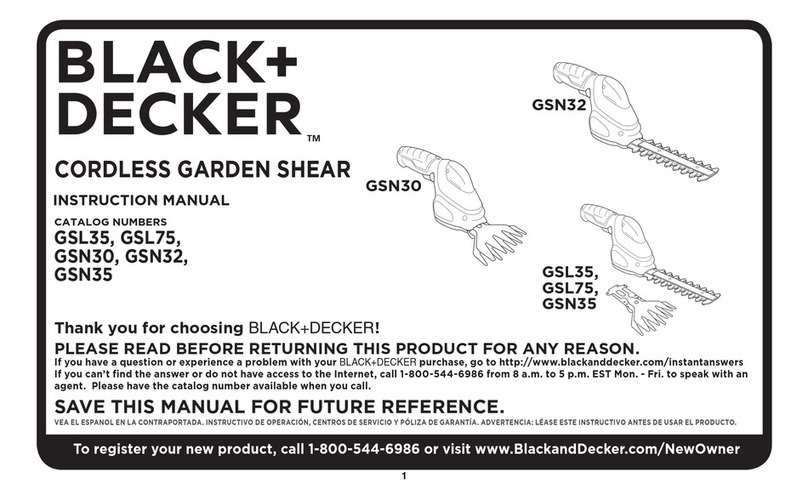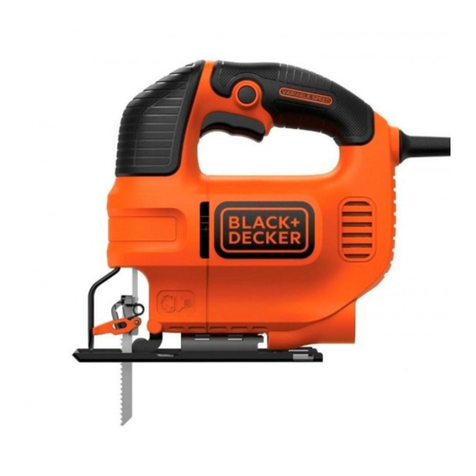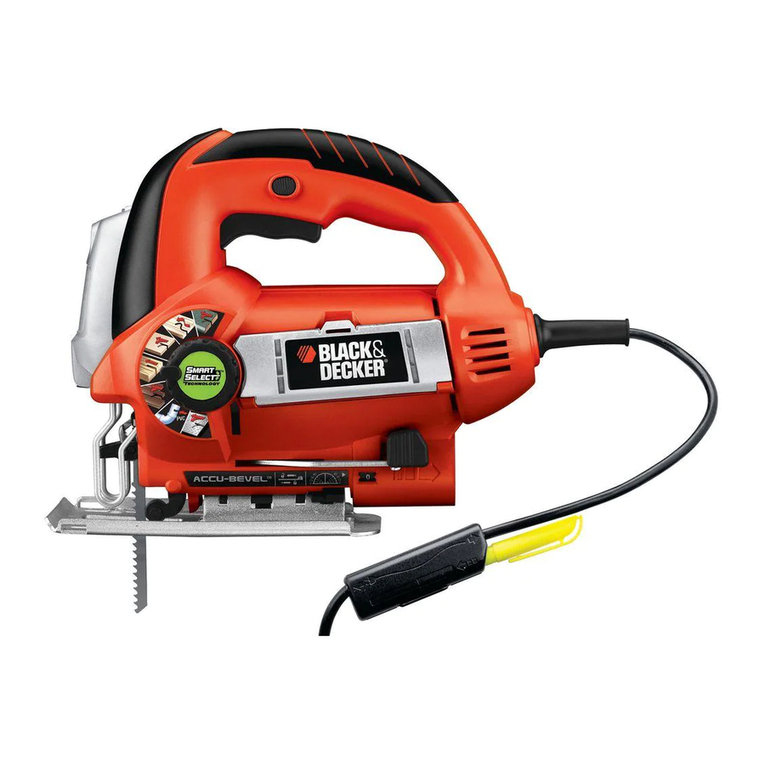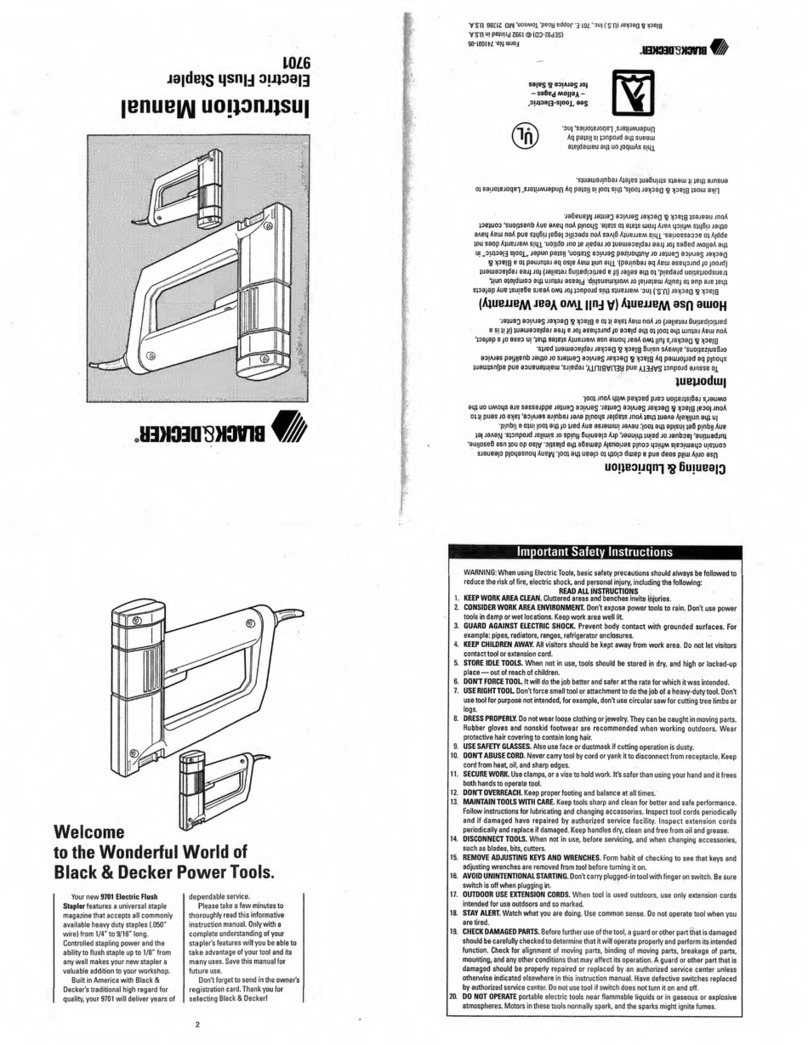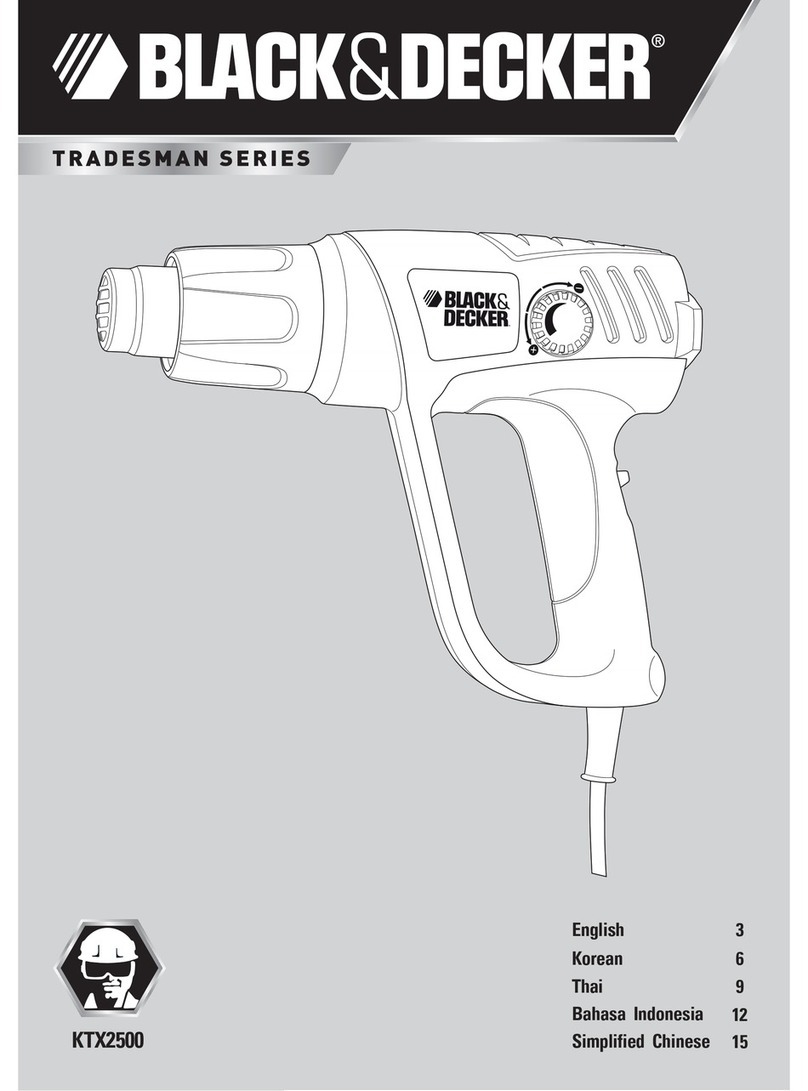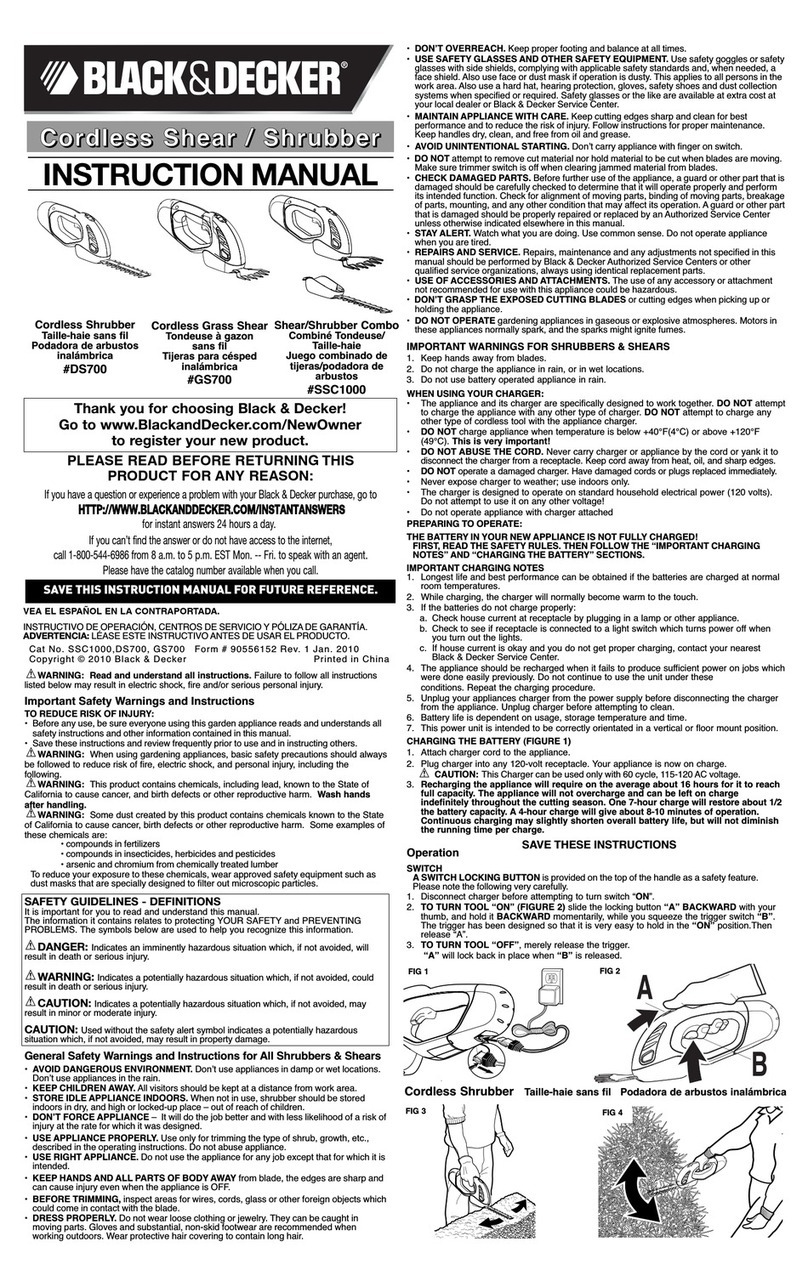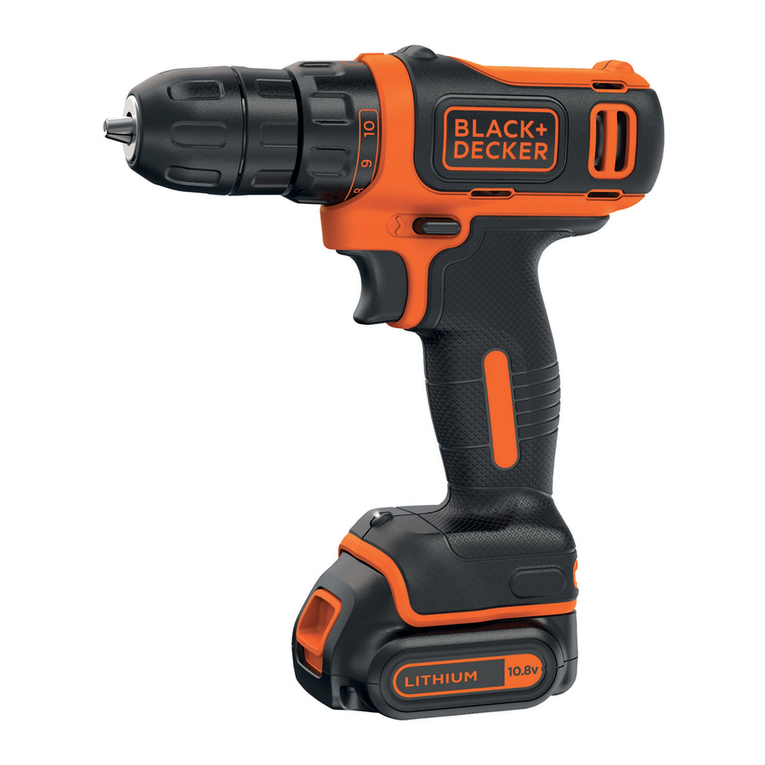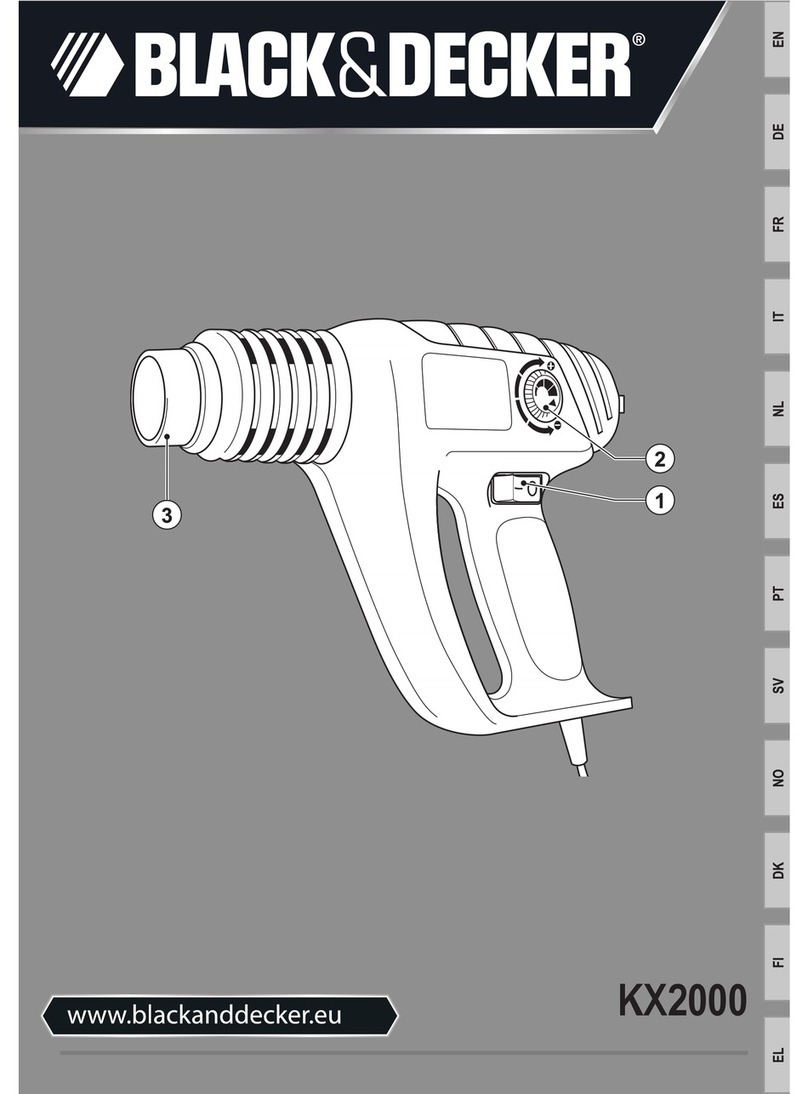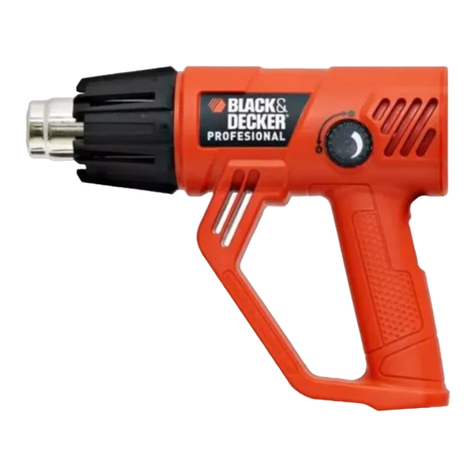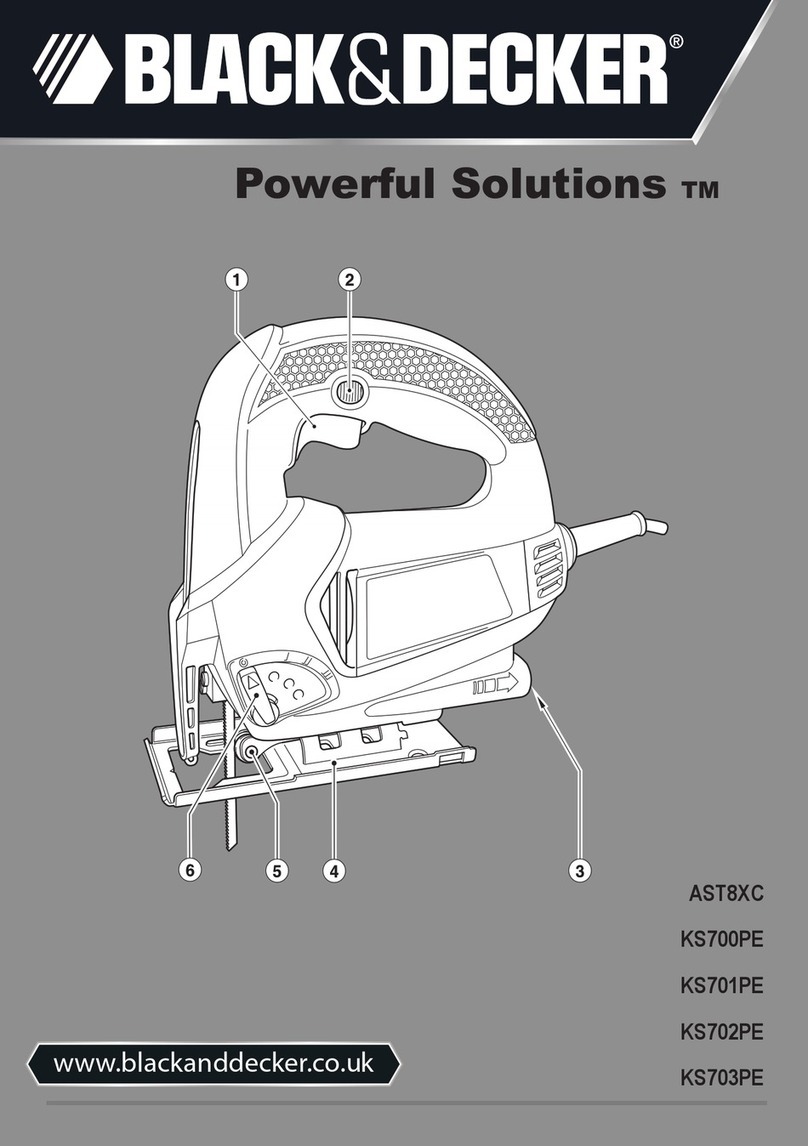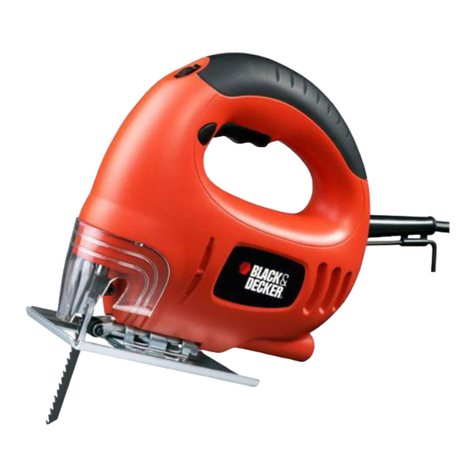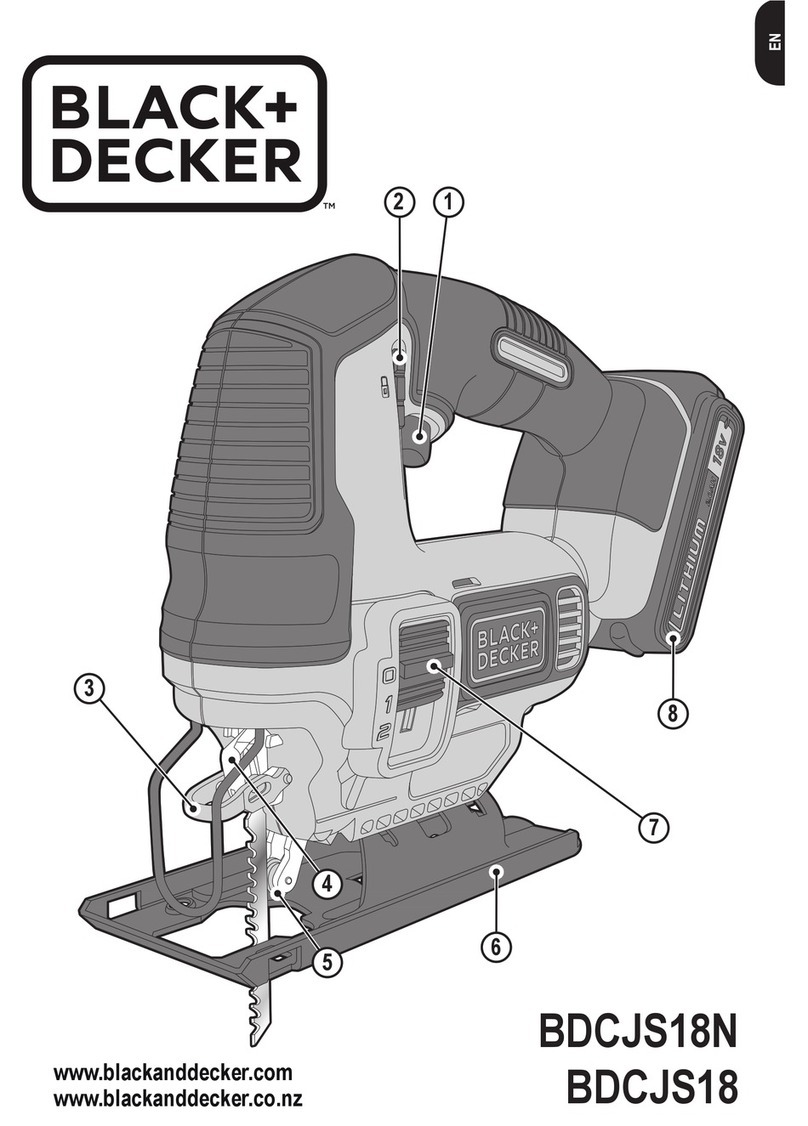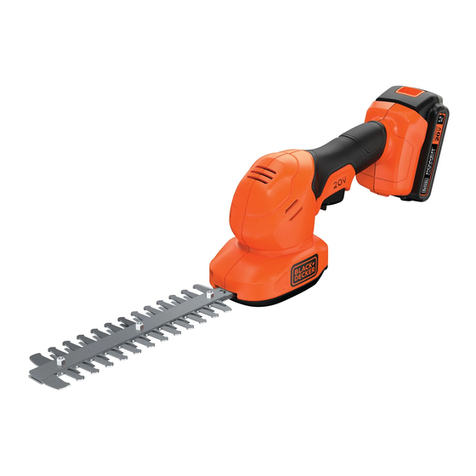
6
ENGLISH (Original instructions)
When assessing vibration exposure to determine safety
measures required by 2002/44/EC to protect persons regularly
using power tools in employment, an estimation of vibration
exposure should consider, the actual conditions of use and the
way the tool is used, including taking account of all parts of the
operating cycle such as the times when the tool is switched off
and when it is running idle in addition to the trigger time.
Important safety instructions for all integral battery
tools
Warning! Read all safety warnings, instructions, and caution-
ary markings for the battery, charger and product. Failure
to follow the warnings and instructions may result in electric
shock, re and/or serious injury.
uNever force a charger plug into the tool.
uDO NOT modify the charger plug of a non-compatible
charger in any way to t into the tool as the battery may
rupture causing serious personal injury.
uDO NOT charge or use the battery in explosive atmos-
pheres, such as in the presence of ammable liquids,
gases or dust.
Inserting or removing the charger plug from the tool may
ignite the dust or fumes.
uOnly charge the battery with the provided charge lead and
a suitable class 2 power supply.
uDO NOT splash or immerse in water.
uDO NOT allow water or any liquid to enter tool.
uDO NOT store or use the tool in locations where the
temperature may reach or exceed 104 °F (40 °C) (such as
outside sheds or metal buildings in summer). For best life
store tools in a cool, dry location.
uDo not store the tool with the switch locked on. Never tape
the switch in the ON position.
uDO NOT incinerate the tool even if it is severely dam-
aged or is completely worn out. The battery can explode
in a re. Toxic fumes and materials are created when
lithium-ion batteries are burned.
uIf battery contents come into contact with the skin, im-
mediately wash area with mild soap and water. If battery
liquid gets into the eye, rinse water over the open eye for
15 minutes or until irritation ceases. If medical attention is
needed, the battery electrolyte is composed of a mixture
of liquid organic carbonates and lithium salts.
uContents of opened battery cells may cause respiratory
irritation. Provide fresh air. If symptoms persist, seek
medical attention.
u Battery liquid may be ammable if exposed to spark or
ame.
uNever attempt to open the tool for any reason.
If the tool case is cracked or damaged, do not charge. Do
not crush, drop or damage the tool.
Do not use a tool or charger that has received a sharp
blow, been dropped, run over or damaged in any way
(e.g., pierced with a nail, hit with a hammer, stepped on).
Damaged tools should be returned to the service center
for recycling.
Storage recommendations
The best storage place is one that is cool and dry, away
from direct sunlight and excess heat or cold.
Store the fully charged tool disconnected from the
charger.
Transportation
Note: Integral Li-ion tools should not be put in checked
baggage on airplanes and must be properly protected
from short circuits if they are in carry-on baggage.
Important safety instructions for all integral battery
charging
Warning! Read all safety warnings, instructions, and
cautionary markings for the battery, charging cable and
product. Failure to follow the warnings and instructions may
result in electric shock, re and/or serious injury.
uThe provided charging cable is not intended for any uses
other than charging BLACK+DECKER rechargeable tools
with micro charging ports. Charging other types of tools
may cause their batteries to overheat and burst, resulting
in personal injury, property damage, re, electric shock or
electrocution.
u Use only with the Listed/Certied Information Technology
(computer) Equipment.
uDO NOT expose charging cable to water, rain or snow.
uPull by the plugs rather than the cord when disconnecting
the charging cable. This will reduce the risk of damage to
the plugs and cord.
uMake sure that the cord is located so that it will not be
stepped on, tripped over or otherwise subjected to dam-
age or stress.
uWhen charging the tool outdoors, always provide a dry
location.
uDO NOT use a charging cable with a damaged cord or
plugs. Have them replaced immediately.
uForeign materials of a conductive nature, such as, but not
limited to, grinding dust, metal chips, steel wool, aluminum
foil or any buildup of metallic particles should be kept
away from the charging and micro charging plugs and
port.
uAlways unplug the charging cable from the power supply
when there is no tool attached to it.
Residual risks.
Additional residual risks may arise when using the tool which
may not be included in the enclosed safety warnings. These
risks can arise from misuse, prolonged use etc.
